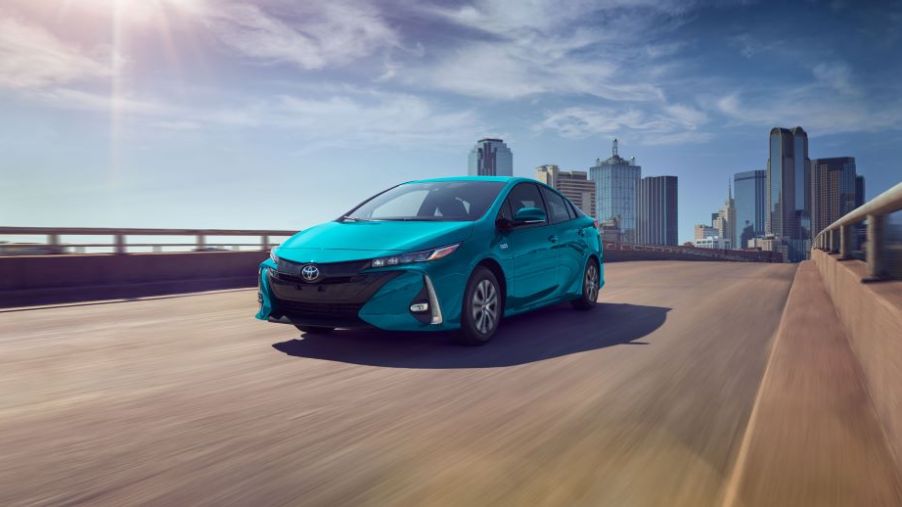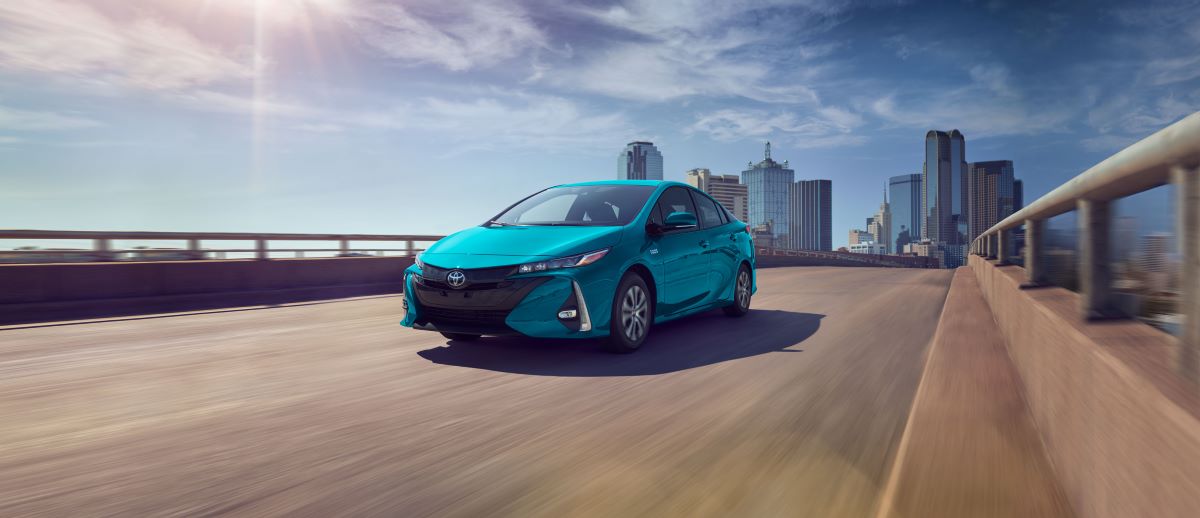
Do These 4 Drawbacks Make the 2022 Toyota Prius Prime a Bad Car?
The Prius Prime was the go-to vehicle to provide plug-in performance almost a decade ago. Electric-only driving is necessary for some commuting in crowded cities, and manufacturers have stood up to the task. Currently, a dozen or so plug-in models are competing with the 2022 Toyota Prius Prime. Toyota’s Prius-based plug-in must impress, but do the following four drawbacks make it a bad car?
1. Lackluster acceleration at highway speeds makes the 2022 Prius Prime scary to drive
No one expected the 2022 Toyota Prius Prime to be a backroad barnstormer. But drivers will feel just how slow the plug-in hybrid is outside of congested urban environments. It takes the Prius Prime seven seconds to get from 50 to 70 mph, according to Car and Driver testing. That isn’t just bad, it’s a legitimate liability. Such slow highway acceleration is downright dangerous, especially when trying to navigate on-ramps and make passes in traffic.
2. Less cargo space than the regular Prius
The two AC motors, a 6.2-kWh lithium-ion battery pack, and the 3.3-kW onboard charger take up a good amount of space. Given that the Prius and Prius Prime share the exact same body, that means less space for cargo. The 19.8 cubic feet behind the rear seats is less than many competitors because of the raised floor to accommodate the battery pack. One can always fold down the rear seats, but electrification sacrifices the flat load floor found in the standard Prius.
3. The 2022 Prius Prime infotainment system feels ancient
The upper-level 2022 Prius Prime features an 11.6-inch touchscreen. Despite its impressive size, Edmunds reviewers don’t think it’s a good unit. They say the display “suffers from cluttered virtual buttons, unsophisticated graphics, and clumsy menus.” It has a relatively poor voice recognition system, too. It doesn’t take long with a clunky, slow infotainment system to understand why it’s such common complaint among owners. Even the most patient among us get frustrated with technology. And frankly, the infotainment in the 2022 Toyota Prius Prime is more enraging than dealing with a finicky printer.
4. Only 25 miles of pure-electric range
Plug-in hybrids haven’t been around too long. Thus, it’s understandable that pure-electric range can’t ferry owners across the country with ease. However, only 25 miles in 2023 is inadequate compared to the plug-in competition. Most others offer electric-only driving modes lasting at least 50% longer.
How much is a 2022 Toyota Prius Prime?

The outgoing first-generation Prius Prime begins just below $29,000 in the base LE. The MSRP rises to $30,550 in the mid-level XLE and to $34,550 in the top-tier Limited.
The major differences between the three trim levels are interior surfaces, tech, and driver assistance features. For instance, blind-spot monitoring is available only in the Prius Prime Limited. Nevertheless, each trim level starts with Toyota’s impressive Safety Sense 2.0.
Should you wait for the 2023 Prius Prime?
The 2022 Toyota Prius Prime’s drawbacks don’t make it a bad car. But the completely redesigned 2023 Prius Prime is a reason one may forgo the outgoing model. The new version also improves in more areas than the aforementioned four.
A new powertrain with a 2.0-liter gasoline engine means more power, 220 horsepower to be exact. Even though it has a seven-second 0 to 60 mph time, fuel economy has increased to 57 mpg combined in front-wheel drive models. All-wheel drives Prius Primes drop that to 54 mpg, the benchmark of the 2022 model. A larger battery pack also increases the electric-only range to around 40 miles, in line with modern plug-ins.
Toyota hesitates to unveil prices for the all-new Prius Prime, set to debut at dealerships this spring. Many offer a speculative price increase of at least $3,000 for the entry-level plug-in. Regardless, there’s no questioning the worth of the hybrid sedan’s new, achingly good looks.



